Artisan Bread Recipe – How to Make Homemade Artisan Bread
For thousands of years, humans have been on the quest of making delicious homemade bread. Our bread evolution has gone on for so long that we have gone from making flatbreads out of wild grains to making fancy artisan French baguettes and Italian ciabattas.
People have gotten tired of that same old bland and unappetizing taste of machine-produced white bread widely available on the shelves of supermarkets. More and more people are going to boutique bread bakeries to satiate their craving for something that’s better and has a richer taste.
Many people are willing to pay a higher price for a delicious loaf of hearty artisan bread, as they taste good and are a healthier option. However, if you want to add artisan bread to your regular diet, you should start making them yourself.
Many people wonder how to make artisan bread at home that tastes like the expensive ones you find at bakeries. The truth is that making them is easier than you would think.
This post may include links to purchase items from our affiliates.
Benefits of Artisan Bread
Before getting into the ‘how to’ of making artisan bread, we must look at why we should be making them. These benefits of making artisan bread will make you realize that it is worth the effort it takes to make them at home.
Artisan Bread is Healthier
The original recipes only have about three or four ingredients: flour, water, yeast, and maybe milk. But those factory-made loaves of white bread have many unnecessary ingredients like chemical additives and preservatives.
Without preservatives, loaves of bread will have a shorter shelf life and will get moldy very quickly. This is why producers add these chemicals to increase their shelf life and to make sure their products last longer.
However, daily consumption of these preservative-infused white breads is incredibly unhealthy and can lead to numerous health issues like digestive problems, skin problems, and even cancer.
Using white flour to make these bread might make them softer and longer-lasting, but white bread can cause a plethora of health problems like high cholesterol, hypertension, heart disease, diabetes, obesity, etc.
Artisan bread has no preservatives, and you can use whole wheat, multigrain, and other healthier flours to make them. Plus, if you make sourdough bread, you can eliminate the yeast too.
Artisan Bread Tastes Better
Unlike regular white bread, artisan bread is not bland. It has a richer taste, and you can really tell the difference from the first bite. They even taste healthier and are easier to digest. It is difficult to go back to factory-produced bread after eating artisan bread. When you get the taste of something better, regular white bread won’t be enough anymore.
Make It How You Want
How do you make artisan bread? Well, it is entirely up to you. Making artisan bread at home leaves a lot of room for creativity, especially when it comes to ingredients. The key ingredient is the flour, and what kind of flour you choose is entirely up to you. The same goes for the shape and design. You can add intricate details to your bread, and if you love baking, it is wonderful to be able to make “designer bread.”
Recipe Description
A key element of artisan bread is the texture. Most artisan bread has a toasty crust and a softer inside. They have a rustic look to them. The recipe will vary based on what sort of artisan bread you want to make.
Some examples of artisan breads are baguette, brioche, ciabatta, focaccia, etc. Most of them can be made in a sourdough variety, and the difference lies in the process.
Ingredients:
Ingredients for making artisan bread will vary based on what type you want to make. The key ingredients are often the same: flour, water, and yeast. If you want to make sourdough, you wouldn’t need the yeast. Extra ingredients will vary based on what you want to make, like nuts, dry fruits, butter, etc.
The easiest artisan bread you can make is French baguettes. These crusty, long loaves of bread are delicious and require only a few ingredients.
The Ingredients for French Baguettes are as Follows:
- 450 grams of flour
- 50ml warm water
- 1.5 teaspoons of active yeast
- Cool water as needed
- Extra flour for dusting
Procedure
- Start by bringing the yeast to life. Put the warm water into a cup and add the yeast. Slowly the water will become foamy as the yeast starts to become active.
- Put the flour in a large bowl and mix in the salt. Make a little hollow in the middle, pour in the dissolved yeast, and stir it in until it slowly comes together. Add in some of the cool water until it becomes a stiff dough. Cover the bowl with a cling wrap and set it aside for 30 minutes, if possible in a warm place.
- After 30 minutes, turn the dough onto a lightly floured surface. Shape it into rectangles and fold it into thirds. Turn it over and repeat the process.
- Oil a big bowl and place the dough in it. Cover the bowl with cling wrap and let it rise for an hour or two. Leave the bowl in a warm place to encourage yeast activity. The dough will double in size during this time.
- Put the dough on a floured surface and divide it into four equal parts. Shape them into long baguettes, put a light coating of oil on top, cover with a flour-dusted tea towel and cling wrap, and let them rise for half an hour to 45 minutes.
- Preheat the oven to 450°F and place a water pan on the bottom rack.
- Uncover and transfer the dough to a buttered baking sheet and make four light slashes on each piece with a knife. Dust lightly with flour.
- Bake for half an hour or 45 minutes until browned and crusty.
Make Your Own Artisan Bread
This easy homemade artisan bread recipe is fast and healthy. Try making your own bread, especially if you want to opt for a healthier lifestyle and a cleaner diet.
Give it a try!
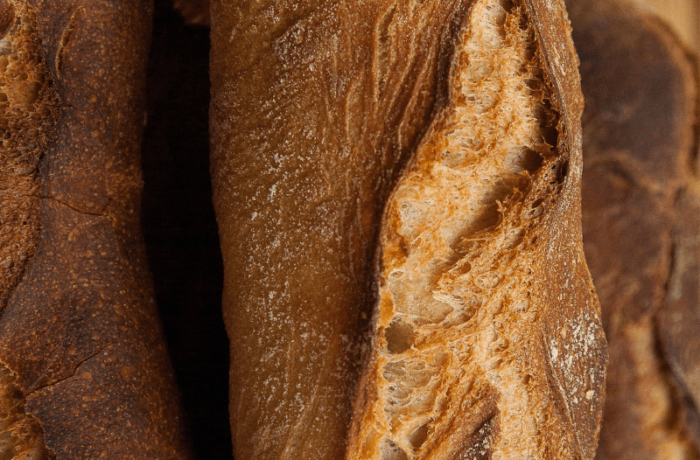
French Baguettes
Ingredients
- 3 1/2 cups flour, (450 grams)
- 1/4 cup water, (50 ml)
- 1.5 tsp active dry yeast
- cool water as needed
- extra flour for dusting
Instructions
- Start by activating the yeast. Put the warm water into a cup and add the yeast. Slowly the water will become foamy as the yeast starts to become active.
- Put the flour in a large bowl and mix in the salt. Make a little hollow in the middle, pour in the dissolved yeast, and stir it in until it slowly comes together. Add in some of the cool water until it becomes a stiff dough. Cover the bowl with a cling wrap and set it aside for 30 minutes, if possible in a warm place.
- After 30 minutes, turn the dough onto a lightly floured surface. Shape it into rectangles and fold it into thirds. Turn it over and repeat the process.
- Oil a big bowl and place the dough in it. Cover the bowl with cling wrap and let it rise for an hour or two. Leave the bowl in a warm place to encourage yeast activity. The dough will double in size during this time.
- Put the dough on a floured surface and divide it into four equal parts. Shape them into long baguettes, put a light coating of oil on top, cover with a flour-dusted tea towel and cling wrap, and let them rise for half an hour to 45 minutes.
- Preheat the oven to 450°F and place a water pan on the bottom rack.
- Uncover and transfer the dough to a buttered baking sheet and make four light slashes on each piece with a knife. Dust lightly with flour.
- Bake for half an hour or 45 minutes until browned and crusty.


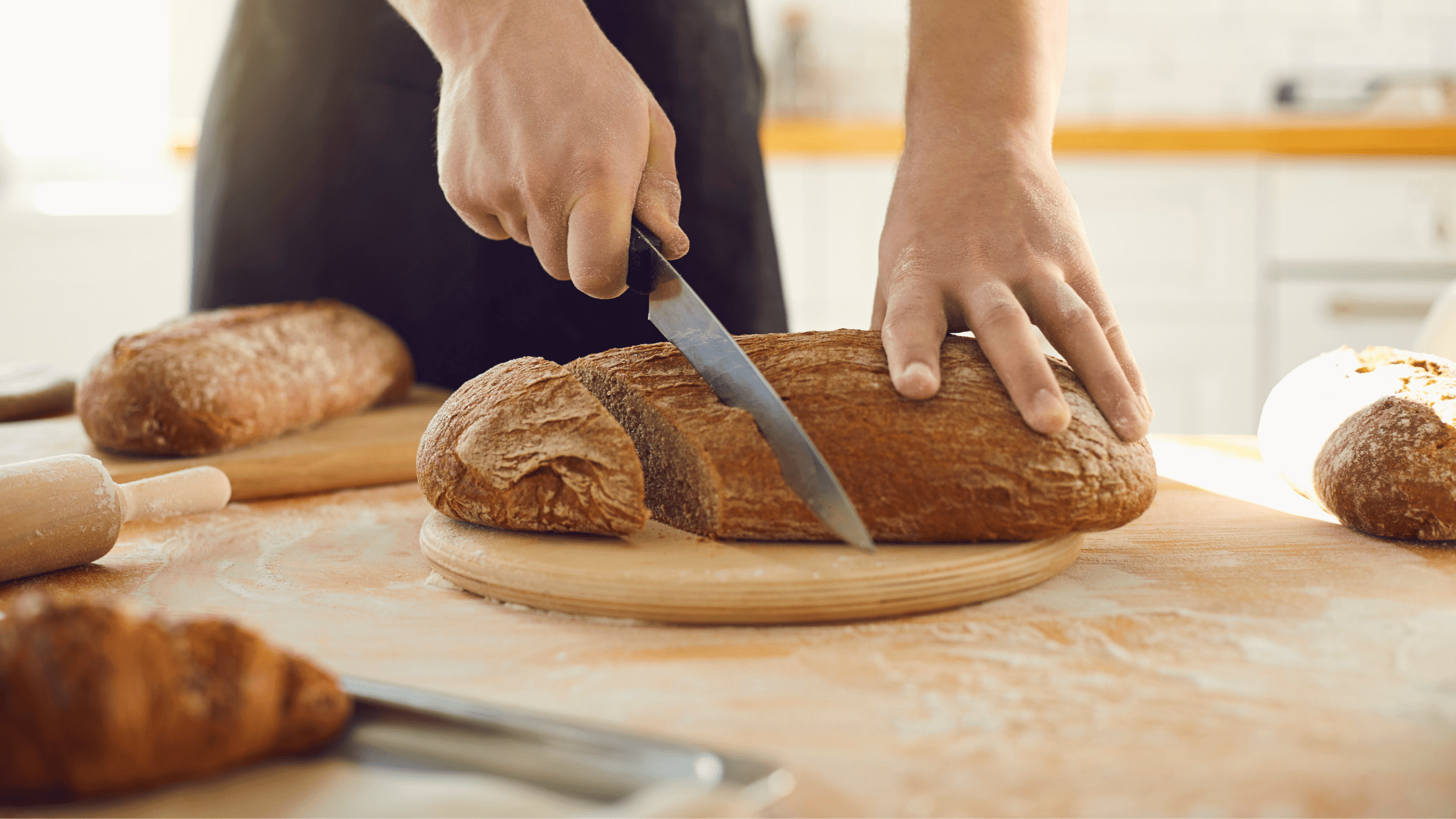
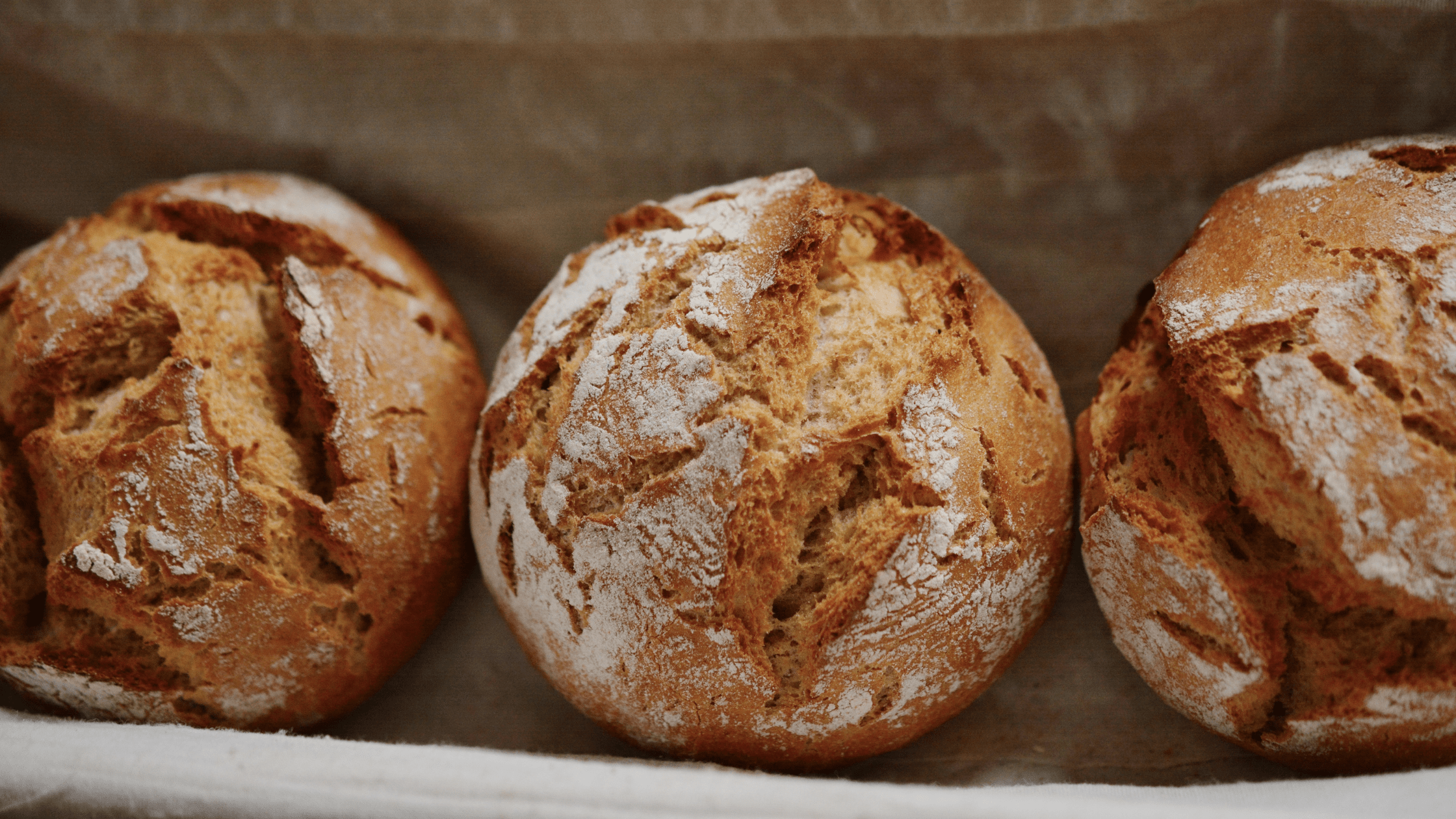
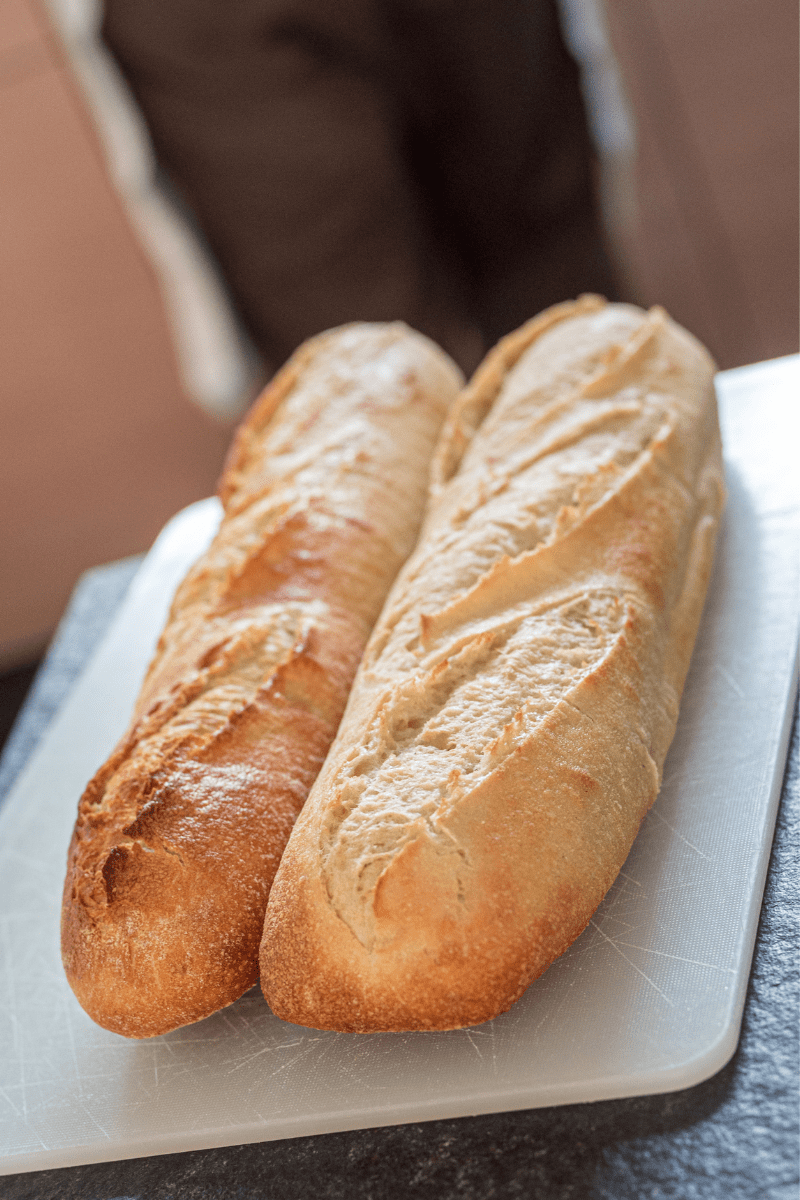
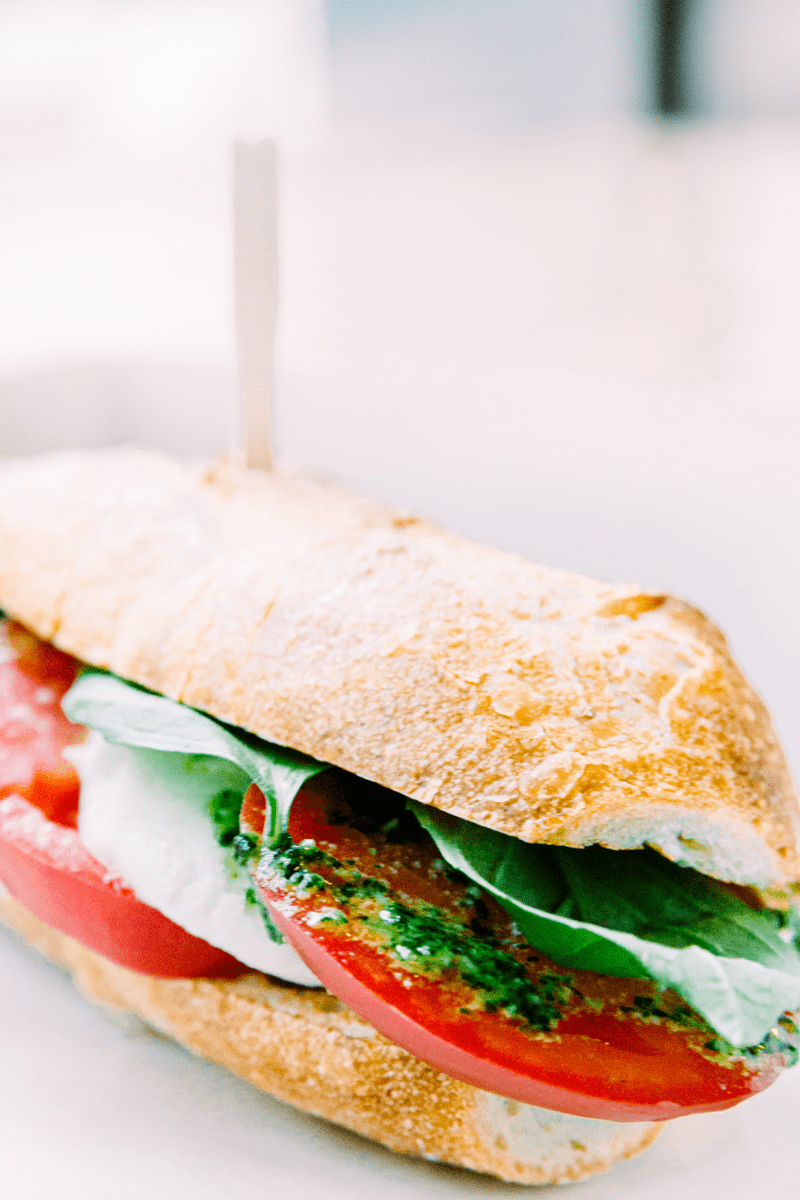
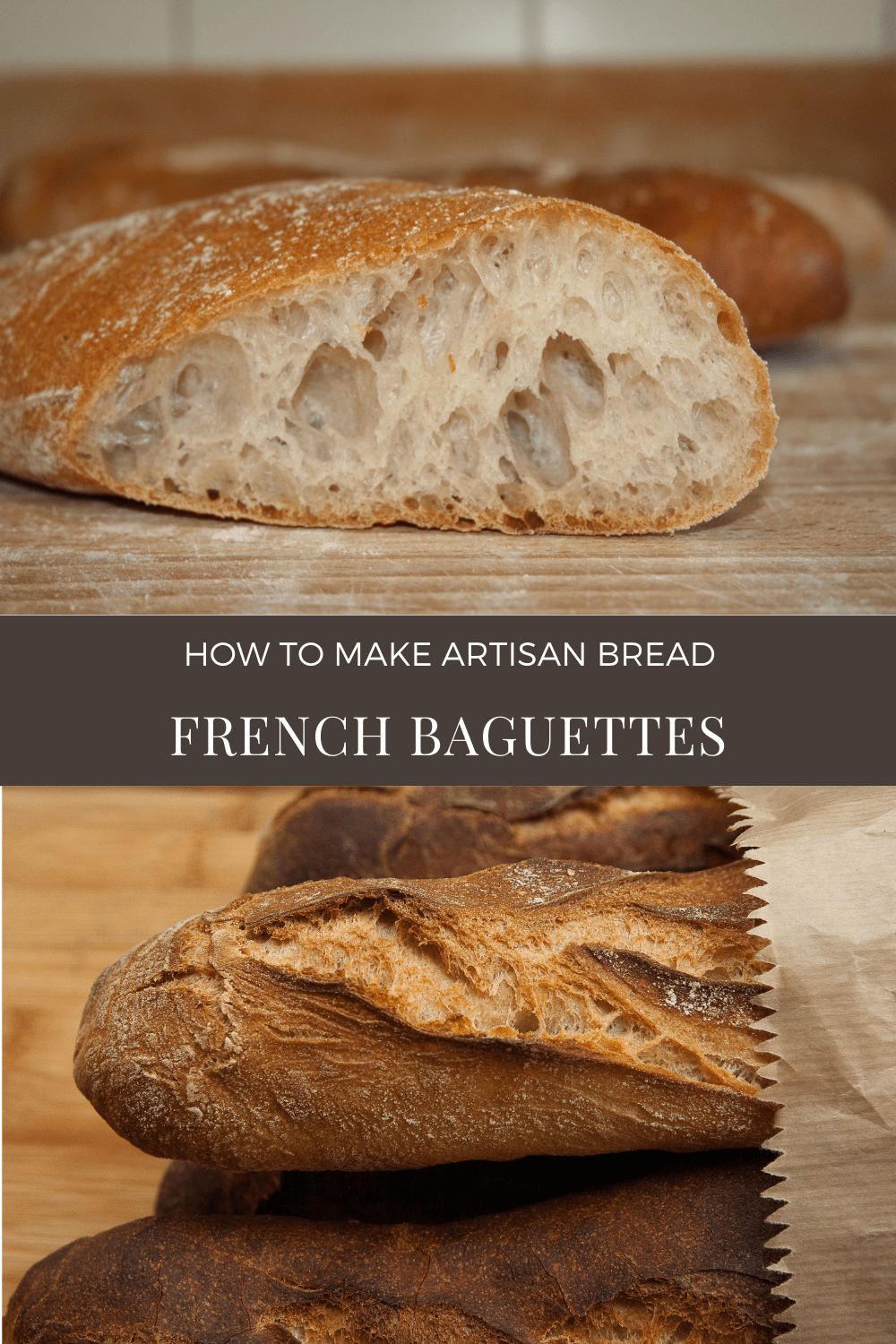
how much salt ?